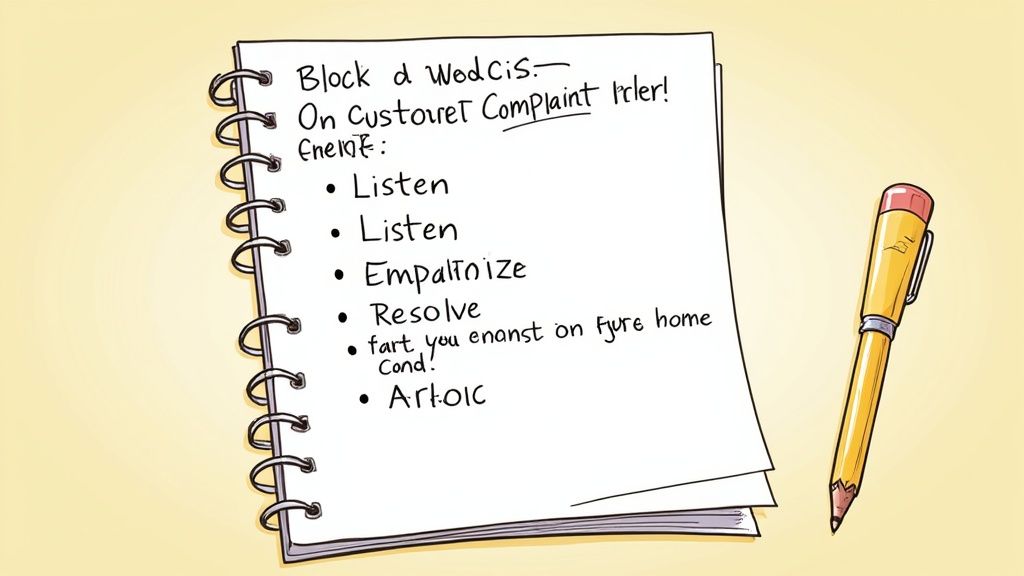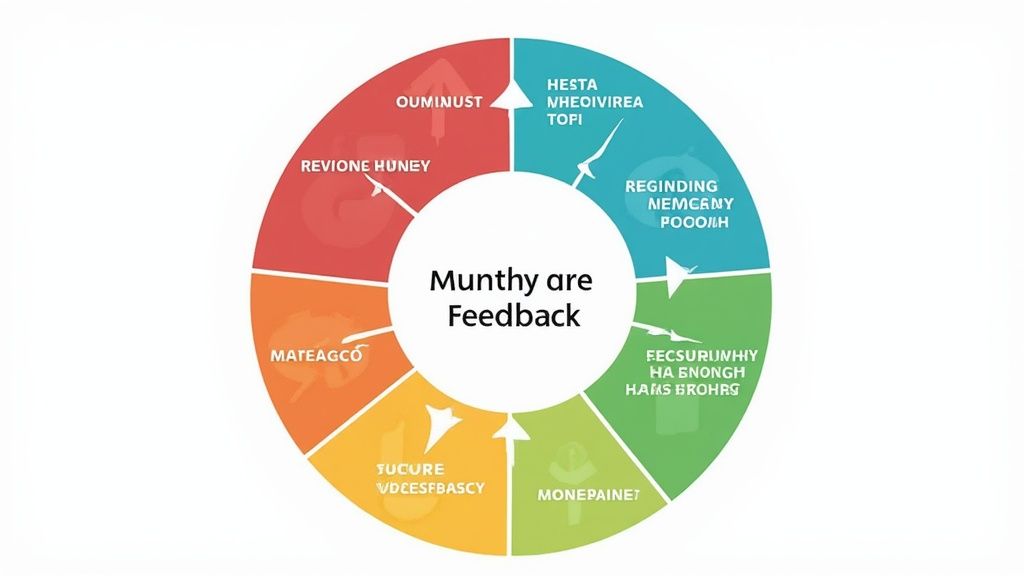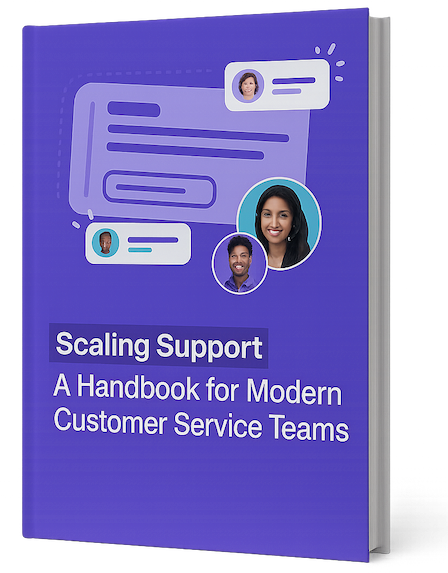When customers share feedback, they provide far more than just comments – they offer valuable insights that directly affect your business success. Just consider how one negative review can ripple outward, potentially steering away many prospective customers in our connected world. That’s why handling customer complaints skillfully isn’t just good service – it’s essential for protecting and growing your business.
Why Every Complaint Counts
While praise feels good, complaints often bring the most useful insights. Think of them as free consulting that spotlights weak points you might have missed in your products, services or processes. Even better, complaints give you the chance to win back unhappy customers. Studies show that 70% of complaining customers will return if you resolve their issue well, jumping to 95% with immediate resolution. These numbers show just how powerful good complaint handling can be for building loyalty.
The Psychology of Complaint Handling
Resolving complaints does more than just fix problems – it creates emotional connections. When customers feel truly heard and see their concerns addressed, they form stronger bonds with your brand and become more likely to recommend you to others. But ignoring complaints has the opposite effect, breeding resentment that can spread through word-of-mouth and harm your reputation. The key is handling issues in ways that build positive relationships.
Turning Complaints Into Opportunities
Good businesses use complaint data as a guide for making improvements. By tracking complaint patterns, you can spot recurring issues and make systematic fixes. For example, if multiple customers struggle with your checkout flow, that’s a clear sign it needs redesigning. Or if wait times generate frequent complaints, you may need more staff or better processes. Taking action based on complaints shows customers you value their input.
Measuring the Impact
Key metrics help gauge how well you’re handling complaints. The Issue Resolution Rate (IRR) measures the percentage of reported issues that get resolved, giving a clear view of your team’s effectiveness. A high IRR points to satisfied customers and smooth operations. Post-resolution satisfaction scores provide additional insight into your efforts’ impact and help refine your approach. This data-driven method enables ongoing improvements to your complaint handling.
Building Your Complaint Resolution Framework
Effective complaint management requires a structured approach that builds on understanding customer psychology and measuring impact. A well-designed framework empowers teams to handle issues consistently while turning negative experiences into growth opportunities.
Establishing Clear Protocols and Procedures
Having standardized procedures helps teams resolve complaints efficiently and confidently. The process should map out specific steps from initial receipt through final resolution. For instance, you might require social media complaints to be acknowledged within one hour – showing customers you value their input right away. Assigning a dedicated owner for each case ensures nothing falls through the cracks and creates clear accountability.
Setting Response Time Standards That Meet Customer Expectations
Speed matters when addressing complaints. Research shows 42% of people expect social media responses within an hour. Delayed responses often make situations worse and can damage your reputation. That’s why it’s important to set ambitious yet achievable response time targets based on the communication channel. While 24 hours might work for email, phone and chat issues need much faster handling.
Maintaining Quality as Complaint Volumes Scale
As companies grow, so do complaint volumes. Keeping response quality high becomes more challenging at scale. Creating a detailed knowledge base of common issues lets customers find answers themselves while freeing up agents for complex problems. Using templated responses (with room for personalization) helps maintain consistency without losing the human element. You might find this helpful: How to master your sitemap.
Real-World Examples of Successful Complaint Handling
Companies that excel at complaint handling often see major improvements in customer satisfaction. Take Zappos, known for responding to issues within minutes and going above and beyond to make things right. This builds loyal fans who spread positive word-of-mouth. Other businesses analyze complaint data to spot recurring issues and upgrade products proactively. When done right, complaint resolution can strengthen customer relationships and fuel business growth.

Empowering Your Team to Handle Complaints Like Pros
Strong systems and clear protocols are essential foundations, but at its core, complaint handling is about people. When you equip your team with the right skills and mindset, they become true advocates for your customers and brand. By developing their abilities to transform challenging situations into opportunities for building stronger relationships, you create lasting positive impact.
Cultivating Empathy and Efficiency in Your Team
Successful complaint handling requires both emotional intelligence and practical problem-solving skills. Your team needs deep understanding of customer psychology – what drives frustration, disappointment and anger. Through focused training in empathy, active listening and de-escalation methods, agents learn to validate customer emotions even when they disagree with the complaint itself. For example, a simple acknowledgment like “I hear how frustrating this has been for you” can help defuse tension. Combining this emotional awareness with quick access to solutions and follow-through creates consistently positive outcomes.
Practical De-Escalation Techniques for Frontline Staff
Give your team specific tools to guide difficult conversations productively. The “feel, felt, found” approach works well: “I understand how you feel. Other customers have felt similarly when [describe situation]. They found that [share solution] helped resolve their concern.” This validates emotions while moving toward resolution. Another key technique is reframing – shifting focus from problems to solutions. Rather than dwelling on what went wrong, agents can say “Let’s explore how we can make this right for you moving forward.”
Adapting Your Approach Across Different Channels
Each communication channel requires its own strategic approach. Email may allow 24 hours for response, but social media demands much faster engagement, often within an hour, since complaints there are public-facing. Train your team on channel-specific best practices, including appropriate tone and language. Email tends to be more formal, while social media allows for a conversational style that matches the platform’s nature.
Turning Challenging Interactions into Opportunities
Success comes from building genuine customer focus throughout your team. Move beyond scripts to encourage ownership of each interaction. When agents view complaints as chances to strengthen relationships rather than just problems to solve, they create better outcomes. A well-handled complaint often builds more loyalty than error-free service. This directly impacts retention and referrals while reinforcing your reputation for excellence. The key is empowering your team to engage authentically and take initiative in making things right.
Converting Complaints into Actionable Intelligence

Having a team skilled at handling complaints is essential, but the real value lies in using customer feedback to improve your business. Smart companies know that complaints aren’t just problems – they’re valuable data points that can help identify areas for growth and enhancement.
Categorizing and Tracking Complaints for Deeper Insights
Start by organizing complaints systematically. Just like sorting through a cluttered space helps you see what you have, categorizing complaints by type reveals important patterns. Tag each issue appropriately – whether it’s a product defect, shipping delay, or billing problem. This helps spot recurring issues that need attention. For instance, if 30% of complaints relate to one product feature, that’s a clear signal to focus on improving that area. This focused approach helps direct resources where they’ll have the most impact.
Turning Insights into Action: A Data-Driven Approach
Once organized, this complaint data drives a cycle of continuous improvement. Like scientists refining their methods based on results, businesses can use complaint patterns to find and fix root causes of customer frustration. This goes beyond quick fixes to address deeper issues. By tracking results over time, you can measure if changes actually solved the problems. This ongoing process of analysis and adjustment turns reactive complaint handling into proactive problem prevention.
Real-World Examples of Complaint-Driven Innovation
Many businesses have successfully used complaint data to make meaningful improvements. Take the example of an online retailer who noticed many customers complaining about slow deliveries. After analyzing the data, they discovered the main bottleneck was their warehouse picking process, not shipping. Installing a new automated system dramatically reduced processing times and boosted customer satisfaction. This shows how digging into the reasons behind complaints often reveals unexpected solutions.
Measuring the ROI of Complaint Handling: Demonstrating Value
It’s crucial to track the business impact of your complaint handling efforts. Look beyond basic resolution costs to measure things like customer retention rates, referrals from satisfied customers, and overall brand reputation. Data shows that resolving complaints effectively can increase a customer’s lifetime value by up to 25%. When you track these key metrics, you can show how good complaint handling directly contributes to business growth. This helps position complaint management as a vital part of building lasting customer relationships rather than just a cost center.
Empowering Support Teams With Modern Technology

The right technology can dramatically improve how customer service teams handle complaints and build stronger relationships with customers. Support teams are now using a mix of intelligent tools to resolve issues faster while collecting valuable insights to prevent future problems. Let’s explore the key ways technology enables more effective complaint handling.
Making Complaints Flow Better With CRM Systems
Salesforce and other Customer Relationship Management (CRM) systems give teams a central hub to track every customer interaction from start to finish. This means no complaint gets lost – cases are automatically routed to the right agent, response times are monitored, and teams can spot recurring issues through detailed reporting. For instance, a good CRM helps teams achieve resolution rates above 90% by keeping everyone organized and accountable.
Quick First Response Through AI Assistance
AI chatbots now handle common questions immediately, which frees up human agents for more complex issues. The bots can guide customers through basic troubleshooting and gather key details before connecting them with an agent when needed. This approach works well since 42% of customers want responses within an hour on social media. The seamless handoff between bot and human agent, enabled by CRM integration, creates a smooth experience.
Spotting Problems Early With Data Tools
Support teams use analytics to scan customer feedback, tickets, and social posts for emerging issues. By analyzing this data, they can identify and fix problems before they affect more customers. For example, if multiple customers report struggles with a specific feature, teams can dig into the root cause and make improvements. This shifts support from reactive fixes to proactive solutions that prevent future complaints.
Keeping Service Personal At Scale
While automation helps handle high volumes, the human element remains essential. Modern tools actually make personalization easier by giving agents quick access to customer history and preferences. For example, SupportMan connects customer feedback to team chat tools like Slack, enabling faster collaboration on negative reviews. Research shows that 70% of complaining customers return after a good resolution experience – proof that technology-enabled personal service builds loyalty. The key is using tools to empower agents with the right information at the right time.
Measuring Success Beyond Resolution Rates
Speed and efficiency in resolving customer issues are important, but they don’t tell the whole story of successful complaint handling. Looking beyond basic metrics like Issue Resolution Rate (IRR) allows you to spot opportunities to build lasting customer relationships and grow your business. Here’s how to take a more complete approach to measuring the impact of your complaint handling efforts.
From Resolution to Retention: Measuring the Long-Term Impact
Customer retention is one of the best indicators that you’ve handled complaints well. Research shows that 70% of customers will continue doing business with you after a satisfactory complaint resolution, rising to 95% when issues are resolved immediately. The key is tracking retention data over months and years, not just days or weeks. This longer-term analysis reveals whether your complaint handling actually rebuilds trust and keeps customers coming back.
The Voice of the Customer: Gathering Feedback Beyond the Initial Complaint
Following up after resolving complaints provides essential insights into your process. Simple post-resolution surveys, calls, or feedback requests help identify what worked and what needs improvement. For example, asking “How satisfied were you with how we handled your complaint?” gives direct input on your approach. By studying this feedback carefully, you can keep refining your practices to create better experiences.
Beyond Satisfaction: Measuring Advocacy and Positive Word-of-Mouth
When you handle complaints exceptionally well, unhappy customers can become some of your strongest supporters. Customers who feel their concerns were truly heard and addressed often recommend businesses to others. While harder to measure than resolution rates, tracking mentions on review sites and social media shows how your complaint handling affects overall sentiment toward your brand.
Building a Comprehensive Measurement Framework: Connecting Metrics to Business Goals
Create a system that links your complaint handling metrics to broader business objectives. Look at how resolved complaints relate to customer lifetime value and churn rates. This data-driven approach demonstrates the business impact of effective complaint handling and positions it as a key strategic function. Setting clear benchmarks and regularly reviewing progress ensures your complaint handling efforts drive long-term success.
Are you ready to improve your customer support and turn complaints into growth opportunities? Start your free trial of SupportMan today and see how seamlessly integrating Intercom ratings into Slack can help your team work more efficiently and make customers happier. Try SupportMan for free!


